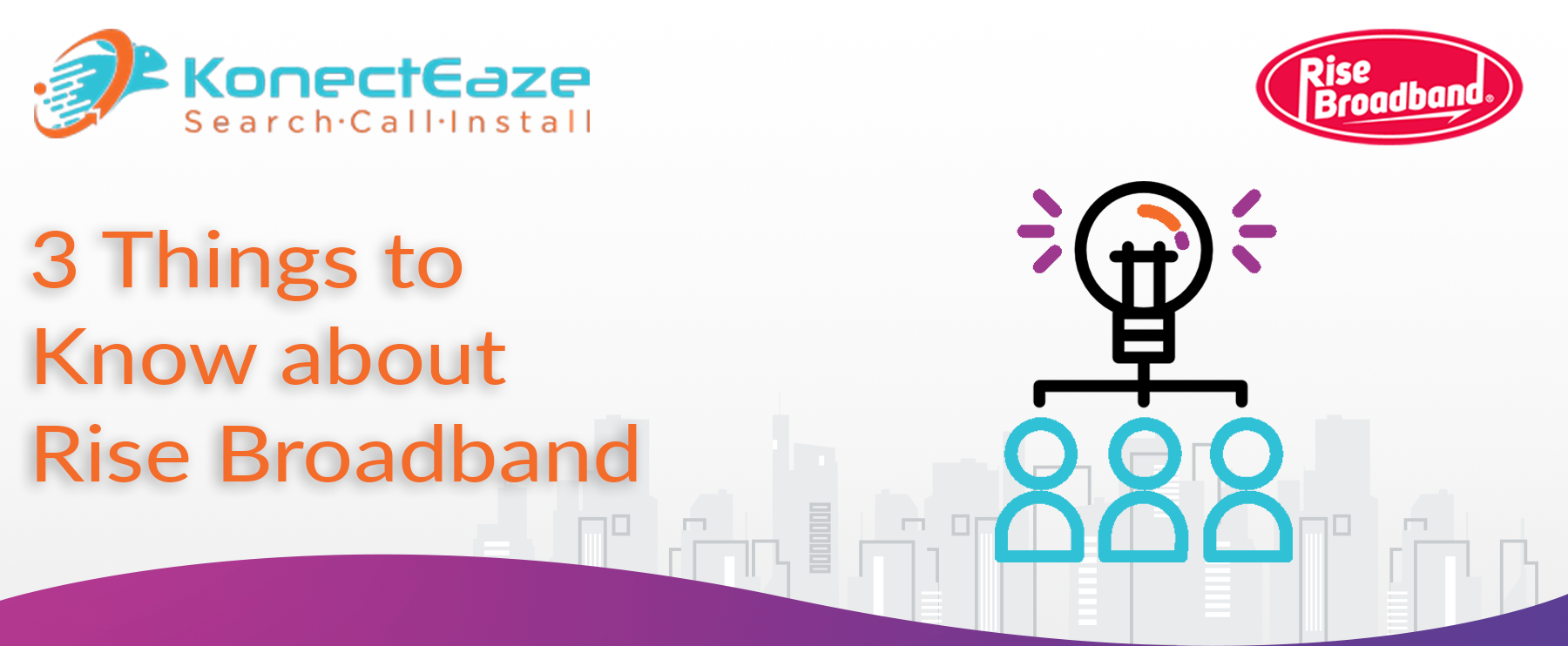The True Cost of Wi-Fi: A Monthly Breakdown and Comparison
Wi-Fi is more than a utility; it's a vital infrastructure that impacts both finances and lifestyles. Uncover the full cost beyond monthly bills and fees.

Wi-Fi Expenses Exposed: The Breakdown Revealed
Gone are the days when setting up internet meant untangling a nest of phone lines and dialing into the endless chirps and beeps of a modem. Today, Wi-Fi has become the lifeblood of connectivity, a fundamental utility almost as essential as water and electricity.
Wi-Fi is everywhere.
Yet, this ubiquity belies a complex reality: the true cost of Wi-Fi is more than just a line item on a monthly bill. It's essential infrastructure that needs careful consideration for its impact on both our wallets and lifestyles.
Introduction
Wi-Fi isn't just a convenience; it's the cornerstone of modern digital life, powering our work, play, and connections. It's a silent partner that enhances almost every aspect of our daily routine.
Uncovering the real expense of Wi-Fi means digging deeper than superficial numbers.
Rates and fees represent just the tip of the iceberg. Monthly billing, complex packages, and additional outlays contribute to a labyrinth of costs that demand a detailed analysis to fully grasp the financial commitment involved.
For homes and businesses alike, Wi-Fi is a necessary investment with a recurring impact on budgets. It obligates us to make sense of various pricing structures, hidden fees, and the quality of service we receive in exchange. By dissecting "invisible" costs, we become equipped to navigate the manifold nuances of our Wi-Fi expenditures.
Decoding Wi-Fi Bills
Examining the fine print on Wi-Fi bills reveals much more than the advertised monthly rate. From taxes and regulatory fees to one-time setup costs, every line item must be considered to understand the full financial scope. Dissecting the bill exposes the intricate details of what you're truly paying for, stripping away any confusion caused by promotional language or bundled offers.
Understanding the nuances of Wi-Fi bills is akin to reading a fiscal roadmap. Charges become more transparent with labels such as "network enhancement fee" or "technology rental." Gleaning knowledge from this detailed layout, consumers can pinpoint where costs may be inflated. It pays to inspect every aspect of the bill—who knows, you might uncover inaccuracies or potential savings lurking behind the complexities of service tiers and add-on features.
Standard Charges Explained
When signing up for Wi-Fi, anticipate charges beyond the monthly rate—installation, equipment rental, and sometimes a hidden maintenance fee.
Unlimited browsing may seem infinite, but exceeding data caps can lead to costly overage fees.
Besides the base rate, you may see a "network enhancement fee" reflecting investments in infrastructure upgrades, critical for maintaining high-speed internet.
Other fees can include "technology rental" for modems and routers, plus taxes and regulatory costs, which can vary significantly by location.
The Hidden Extras
Often, "administrative fees" are lumped into your account, often a small charge but prone to incremental increases over time. They may conceal themselves as innocuous line items, discreetly shaping the overall bill's figure.
Service protection plans offer peace of mind at a price that, if unused, becomes a silent addition to monthly expenses.
Overlooked, potential "environmental fees" might apply, reflecting eco-conscious disposal practices for outdated hardware.
Some providers may impose "priority support fees" for expedited customer service assistance, an amenity that frequently goes unnoticed.
Moreover, if you're locked into a promotional rate, be wary of its expiration. Without vigilance, your bill can quietly inflate as introductory offers sunset into standard pricing, leaving you paying more for the same service.
Lastly, the lure of "free trials" within your service can stealthily transition into paid subscriptions if not canceled timely, nudging your total higher each month.
Understanding Basic Wi-Fi Costs
Wi-Fi expenses are more than just the monthly bill. We must consider all the elements that contribute to the true cost. Each component plays a role in shaping your total Wi-Fi expenditure. From service fees to equipment rentals, various nuances influence the outlay for internet access. Understanding these nuances is key to deciphering your bill.
Base charges, known as service fees, form the core of Wi-Fi costs. Often, these charges correspond to the speed tier you’ve chosen. For instance, higher bandwidth options come with a heftier price tag. Yet, service fees are just the starting point; additional expenses can quickly compound the total amount due each month.
Equipment rental is another significant aspect of Wi-Fi costs. Service providers may charge monthly fees for modems and routers. While it might seem convenient, these fees can add up substantially over time. Thus, long-term users might consider the advantages of purchasing their equipment outright to mitigate this recurring expense.
Installation and activation fees are upfront costs when initiating service. These one-time fees can be a barrier to access for some customers but are often negotiable or waivable during promotions. It's imperative to inquire about these potential waivers or look for promotional periods to minimize upfront costs.
Finally, don't overlook periodic price adjustments and increments. Your initial monthly charge might seem manageable, but over time, service providers might increase their fees. Regularly reviewing your bill for stealthy increases can help you avoid the shock of unforeseen expenses.
Average Monthly Costs for Residential Wi-Fi
The average monthly cost for residential Wi-Fi varies widely based on a myriad of factors including the chosen speed tier and provider location. It is not uncommon for basic internet packages to start at around $20 to $50, escalating upwards for premium, high-speed plans that offer more bandwidth for heavy-use households or those with multiple devices. Prospective customers should explore all their options and compare offerings to strike a balance between speed requirements and budget constraints.
Comprehensive cost analysis shows that customers opting for mid-tier offerings often spend between $50 to $100 monthly, with advanced high-speed or gigabit options surmounting this range. Still, the nuances of individualized usage patterns and specific provider plans render each case unique, emphasizing the importance of tailored research in securing a plan that aligns with personal internet consumption and financial footing.
Factors Influencing Wi-Fi Costs
The velocity and robustness of an internet connection often dictate its price, with higher speeds and greater bandwidths typically necessitating larger financial outlays. Subsequently, this can lead to a substantial increase in monthly expenses, especially when premium speeds are required.
Price disparities between service providers can be significant, influenced by their varying infrastructural investments and market position. Therefore, patrons must scrutinize the landscape to secure cost-effective services.
Moreover, geography plays a pivotal role in shaping Wi-Fi costs, with rural areas frequently facing higher charges due to the increased difficulty of network deployment. This can mean less competition and, thus, fewer choices for consumers.
Bundling services such as cable television or landline telephony with internet can affect the final cost, as providers often offer discounts for these combined packages. However, this means committing to a broader range of services, potentially beyond a customer's actual needs.
The stratification of plans by data limits also perturbs the cost structure, with unlimited plans commanding a premium over capped alternatives. Vigilantly moderating data consumption becomes a strategic exercise to avoid overage fees that can abruptly inflate the monthly bill.
Lastly, contract terms can bind consumers to specific rates and conditions, with penalties for early termination potentially complicating the quest for optimal service. Savvy customers must weigh long-term agreements against the flexibility of month-to-month plans.
Overlooked Wi-Fi Expenses
Maintenance and support fees can lurk in the shadow of your Wi-Fi expenses, often surfacing only when issues arise. They might manifest as on-site technician visits or advanced customer support which can tally up additional charges.
In the realm of connectivity, default settings on home networks often lack robust security, pushing many to invest in enhanced security measures such as virtual private networks (VPNs) and antivirus software, incurring further expenses.
Additionally, firmware updates and the gradual obsolescence of equipment necessitate periodic investments in new hardware to maintain optimal performance and secure connections, which can be quite costly over time.
Equipment and Upgrade Costs
Modern Wi-Fi setups require a gateway, typically a modem and router, which may be separately purchased or rented from the provider. Overlooked in initial setups, these costs can gradually accumulate.
Rental fees for Wi-Fi equipment fluctuate based on model and functionality. Owning your devices outright avoids these recurring charges.
However, technology marches forward, meaning equipment can quickly become outdated. To maintain high speeds and security, consumers must regularly assess their hardware's adequacy, triggering potential upgrade investments.
These upgrade expenses compound when pursuing cutting-edge features like mesh network capabilities and advanced security protocols. As new Wi-Fi standards emerge, such as Wi-Fi 6E, a desire or need to stay current can lead to substantial outlays on the latest equipment, further escalating overall internet costs. It's critical to balance "future-proofing" investments against the tangible benefits received.
Data Caps and Overages
Data caps are ceilings on the amount of data you can use each month—exceeding these limits incurs additional charges. These surcharges can significantly increase your monthly expenses.
Providers may throttle speeds once limits are reached, affecting your internet experience. Some plans feature "unlimited" data but still have hidden thresholds where throttling begins.
When subscribing to a Wi-Fi plan, be wary of data caps that may appear generous at first glance but could be easily surpassed with regular streaming, gaming, or downloading large files. The resultant overage fees, similar to cellular data plans, can be substantial, thus closely monitoring data usage is essential.
Choosing a plan with the right data cap is as crucial as the speed and reliability of your Wi-Fi. Examine your usage patterns and consider the potential costs of overage fees against your monthly budget, and do not hesitate to reach out to your provider to clarify or negotiate the terms of your data allowance. Always remain vigilant for plans marketed as "unlimited" which may actually impose restrictions that affect performance.
Trimming Wi-Fi Expenditures
One strategic method to trim your Wi-Fi bill is by purchasing your own modem and router. Often, monthly rental fees for equipment provided by your internet service can accumulate significantly, surpassing the cost of buying equipment outright within a year. By selecting compatible hardware that meets your needs, you can eliminate ongoing rental charges, resulting in long-term savings.
Additionally, scrutinizing bundled services can lead to cost reductions. Providers tend to promote packages combining internet, cable TV, and telephone services at a discounted rate. However, assessing whether you need all components of the bundle is essential—eliminating unnecessary services can trim excess fat from your Wi-Fi costs. Paying for what you genuinely use and need will reflect positively on your budget and spare you from wasteful spending.
Smart Negotiation Tactics
Armed with research and the right approach, negotiations can lead to substantial savings on your Wi-Fi service. Articulation and confidence in discussions with providers can command better deals.
Know the competitive pricing landscape. Leverage this information during talks with your provider.
Being prepared with competitive prices from other providers can empower you to request price matching. This tactic often leads to a compromise beneficial to both the customer and the provider, especially if you cite long-term patronage and loyalty.
When negotiating, detail any service interruptions or issues faced, and reference these as grounds for discussing discounts. Show willingness to explore competitor options without bluffing. Providers are keen on retaining customers and may offer exclusive deals to prevent defections, which can manifest as waived fees, added features, or reduced rates.
Data Management Essentials
Effective data management is vital for ensuring efficient Internet usage and avoiding overage charges.
- Monitor Usage Rigorously: Track data consumption regularly to prevent exceeding limits.
- Adjust Quality Settings: Lower streaming quality to save on data usage when high definition isn't necessary.
- Optimize Device Connectivity: Disconnect idle devices to conserve data and improve network performance.
- Set Data Alerts: Use your ISP's tools or third-party apps to receive alerts as you approach data thresholds.
- Schedule Heavy Downloads: Plan for large downloads during off-peak hours if your plan offers unlimited data during specific times.
Data caps can be costly; awareness and control are your best defenses.
Implementing these practices can help maintain a balanced data budget without sacrificing essential connectivity needs.
Cost Comparison Between Major Wi-Fi Providers
Comparing Wi-Fi costs among providers like Comcast Xfinity, AT&T, Verizon, and Spectrum reveals varying prices and service bundles. Each company offers unique deals geared toward different user needs.
Providers structure plans with escalating speeds and prices, often reflecting regional monopolies.
The monthly bill from each provider generally includes a base rate for internet service, additional fees for equipment rental, and sometimes hidden costs such as data overage charges. Extras like cable bundling or exclusive streaming services can also influence the final price.
Thoroughly evaluating Wi-Fi offerings from major companies exposes vast differences in pricing strategies, all influenced by market share, geographic coverage, and infrastructure. When considering Comcast Xfinity's bundling benefits compared to AT&T's focus on high-speed options, the "right" choice depends on specific consumer needs. Furthermore, providers often present promotional rates that significantly reduce costs for the initial contract period, but these rates can substantially increase once the promotion expires.
Conclusion
Navigating the landscape of Wi-Fi costs requires a discerning eye and informed decisions. It's not just about the sticker price; the true cost of Wi-Fi extends far beyond the monthly bill presented by your service provider.
Understanding the nuances of Wi-Fi expenses—from varied provider offerings to the impact of equipment fees—can lead to smarter choices and substantial savings over time. Whether it's through negotiating with providers, investing in your own equipment, or carefully monitoring data usage, every user has the potential to optimize their Wi-Fi expenditure.
Moreover, staying abreast of industry trends and regulatory changes is imperative, as they can usher in cost fluctuations and opportunities. Like any utility, the value of Wi-Fi reflects its essential role in our daily lives, but that doesn't mean consumers should accept costs without scrutiny.
The future of Wi-Fi costs is as dynamic as the technology itself. With advancements like 5G and emerging market players, expect continual evolution in service offerings and pricing structures. As consumers, our best defense against overpaying is continued vigilance and willingness to adapt.
In essence, being an informed consumer is your strongest ally in managing Wi-Fi costs. Dive deep into the details, understand your usage, and be prepared to switch gears if better opportunities arise, ensuring you only pay for what you truly need.




